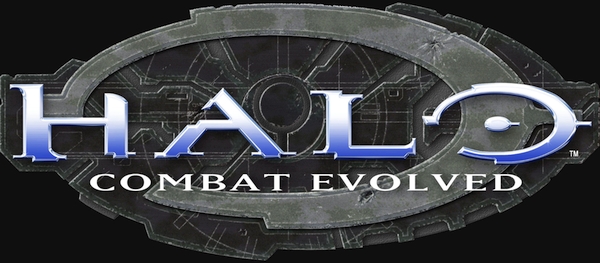This VGC Essay was first published on February 24, 2017
 Microsoft is usually portrayed as the stodgy suit in contrast to Apple’s hip turtleneck, but would you believe that the first Xbox prototype was built on a whim by a quartet of guys from the company’s engineering department?
Microsoft is usually portrayed as the stodgy suit in contrast to Apple’s hip turtleneck, but would you believe that the first Xbox prototype was built on a whim by a quartet of guys from the company’s engineering department?
Kevin Bachus, Otto Berkes, Seamus Blackley, and Ted Hase first took their “DirectX Box” to Ed Fries, the head of Microsoft’s video game division, in 1998. Even though everyone in the world had played a dozen hands (or more) of Windows Solitaire, Microsoft wasn’t a big player in the game development arena at the time. Similar to today’s line of console-like PCs, the original “DirectX Box” was an off-the-shelf Windows PC with a video card and a hard drive that hid the Windows-ness of the system from the player.
Before the “DirectX Box” could move forward, Fries and his team had to fight off a challenge from a separate team within Microsoft that had worked with Sega to produce some of the system software for the Dreamcast. They were pushing for the company to create a more traditional console (no Windows, no hard drive), and Bill Gates himself ultimately stepped in to give his blessing to Fries and his “DirectX Box.”
![]() VGC Essays are original articles discussing each title from the Video Game Canon, as well as their place in gaming history, how the community embraced them in the past, and how they might help shape games in the present day.
VGC Essays are original articles discussing each title from the Video Game Canon, as well as their place in gaming history, how the community embraced them in the past, and how they might help shape games in the present day.
In his scramble to beat the other guys, Fries began to see the merits of a more console-like experience for the “DirectX Box.” In the days that followed, his office began to double as Frankenstein’s laboratory as the team began mixing and matching concepts from both the original “DirectX Box” and its console-like challenger (hopefully while screaming “It’s alive!”). Eventually, the Windows operating system was ejected from the “DirectX Box,” but the off-the-shelf internal components, and especially the hard drive, remained.
With a prototype in hand, Microsoft was ready to begin selling the public on their “DirectX Box” concept. For a massive corporation, this meant focus groups and telephone surveys. And sometime in 1999, I received a call from Microsoft looking for opinions about their upcoming game system. Normally, I don’t talk to telemarketers, but my vanity got the better of me when the caller asked to speak to “the video game expert of the house.” In all my teenage smugness, I responded, “Why yes, I am a video game expert.”
The survey began by asking for my opinions of Microsoft’s current gaming output. As a player who was hooked on Doom, GoldenEye, and Mario Kart at the time, I had never given Microsoft’s developers much thought. That might have been a bit unfair of me, because apparently Microsoft had been instrumental in making sure Doom was compatible with machines that ran Windows 95. So instead, I mumbled something about their Sidewinder controller, then asked, “Does Microsoft make any other games besides Flight Simulator?”
The surveyor countered my combativeness with a list of Microsoft’s recent gaming accomplishments, including Microsoft Golf, Return of Arcade, Age of Empires, Fury3, Motocross Madness, and yes, Microsoft Flight Simulator. I admitted that perhaps I was wrong and that it looked like Microsoft was already building up a stable of game franchises that players were interested in.
After that, the surveyor peppered me with possible names for what she called “The DirectX Box Project.” Years later, Edge Magazine published the complete list of candidates that Microsoft tested during this survey, and a part of me can’t believe that names like FACE (Full Action Center), M-PAC (Microsoft Play and Action Center), Total Action Center, or CyberPlayGround were ever seriously considered. Again, with as much righteousness as my college-bound self could muster, I told her that all of these names “sucked.” Yes, even 11-X, Microsoft’s preferred name for the console. The only one I didn’t outright hate was Xbox. And I wasn’t alone; Xbox was far and away the winner in these telephone surveys, and the choice with the backing of Fries’s development team.
Finally, the surveyor asked me what Microsoft needed to do to compete with Nintendo, Sega, and Sony in the console realm. Very matter-of-factly I said, “Microsoft will never create a console that can compete with Nintendo, Sega, or Sony.” Clearly, I wasn’t the prognosticator I thought I was, but I added that the only way for Microsoft to create a console people would want was to produce games that got people excited, like Doom, GoldenEye, and Mario Kart.
A few months after that, Microsoft toted their Xbox prototype, which was a massive X-shaped silver box with a glowing green core, to the 2000 Game Developers Conference, and officially announced their intention to take over the living room (with an assist from Bill Gates and Dwayne “The Rock” Johnson). A few months after that, the company purchased Bungie Studios and their upcoming game, Halo: Combat Evolved.
The smug teenager in me wants to say, “You’re welcome.”
Under Microsoft’s tutelage, Bungie was able to transform Halo from a standard-looking third-person shooter into the wildly colorful first person shooter it would become. Microsoft saw promise in Bungie’s early footage of Halo, but they were also furiously collecting exclusives for a launch date that was only a year away. According to Ed Fries, Microsoft was “desperate” for a company like Bungie to come along and offer up a compelling game. It didn’t seem like it at the time, but the eight-figure deal turned out to be a bargain.
After its release on November 15, 2001, Halo would become the game by which all console first person shooters were measured. It pushed billions of development dollars toward the genre with its own sequels and those that attempted to be “Halo Killers.” The game’s cinematic presentation built on the narrative leaps undertaken by earlier games like Tomb Raider, Resident Evil, and Final Fantasy VII, and helped fuel the growing “machinima” movement. The franchise’s regenerating shield mechanic has even become the de facto standard for how first person shooters operate.
But most importantly, Halo: Combat Evolved allowed Bungie (and later Microsoft) to create a far-reaching sci-fi universe that more than one commentator has referred to as “this generation’s Star Wars.”
While the Master Chief will never replace Luke Skywalker for many people, the size and scope of the Halo universe can probably only be compared to the galaxy far, far away. Adaptations include (but aren’t limited to) multiple board games, a commercially released soundtrack for every game, more than a dozen expanded universe novels, another half-dozen comic books, a comprehensive encyclopedia, three short film collections, and an upcoming television series produced by Steven Spielberg. Halo has conquered the mainstream in a way that few game franchises have.
Microsoft may have first embarked on creating the Xbox as a whim, and purchasing Bungie may have been a deal done by a consolemaker desperate to publish anything, but the Master Chief stands alone as video gaming’s mascot in the 21st century.
How To Play It Today
A used copy of the original Xbox release of Halo: Combat Evolved can be purchased from nearly any game store in the country. Once you get it home, the game can also be played on an Xbox 360 console thanks to its backwards compatibility features.
Microsoft has re-released Halo: Combat Evolved twice more since its initial launch. The game was remastered for the Xbox 360 in 2011 and released as Halo: Combat Evolved Anniversary, though an option to play it using the original 2001-era graphics was also included. The game was further enhanced for an Xbox One launch as part of Halo: The Master Chief Collection, which also includes the second, third, and fourth Halo games.
Game Information
Publisher: Microsoft Game Studios
Developer: Bungie Studios
Release Date: November 15, 2001
References and Further Reading
Crossley, Rob – Develop – Inside story: The birth of Xbox – 2010
Dudley, Brier – The Seattle Times – Exclusive: Microsoft loses last Xbox founder, mobile PC visionary – 2011
Edge Magazine – 11-X, WEP, Midway, CyberPlayGround, FACE – the rejected names for Microsoft’s first console – 2013
Next Essay: Call of Duty 4: Modern Warfare

